



The GMSR 2025 warns methane emissions could reach 369 Mt by 2030, jeopardizing the Global Methane Pledge. UNEP says a five-year window remains; deep cuts across energy, waste, and agriculture need full technical deployment, strong data, and $127 billion yearly to unlock major climate-health benefits.

Copyright infringement not intended
Picture Courtesy: DOWNTOEARTH
The UN Environment Programme (UNEP) released the Global Methane Status Report (GMSR) 2025 on the sidelines of the COP30 climate summit.
Potent Greenhouse Gas (GHG)
Methane is the second-largest contributor to global warming after Carbon Dioxide (CO₂), responsible for about 30% of the rise in global temperatures since the Industrial Revolution (Source: IEA).
High Warming Potential
It is a Short-Lived Climate Pollutant (SLCP) with a high Global Warming Potential (GWP). Over a 20-year period, it is more than 80 times more potent at trapping heat than CO₂ (Source: UNEP).
Atmospheric Lifespan
It has a much shorter atmospheric lifetime of around 12 years compared to CO₂ which can stay for centuries. (Source: IEA)
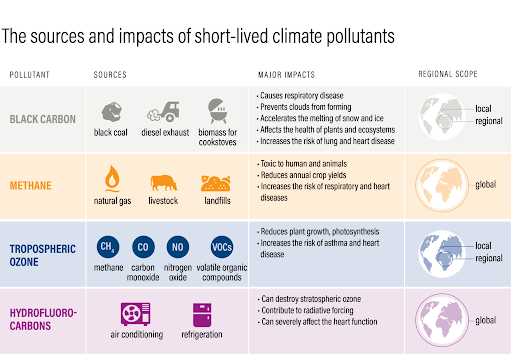
Overall Emission Trends
Global human-caused methane emissions are rising, with the energy sector reached 120 Mt released in 2023. (Source: IEA Global Methane Tracker 2024).
Emissions of methane are projected to grow 13% by 2030 and 56% by 2050 under current policies, driven by population and economic growth, threatening the Paris Agreement and Global Methane Pledge goals.
Major Sources of Anthropogenic Methane
Every year almost 600 million tonnes of methane are emitted in the atmosphere. Of these, about 60% originate from human activities. (Source: FAO)
Agriculture accounts for 42% of global methane emissions, primarily from livestock digestion (enteric fermentation), rice cultivation, and manure management.
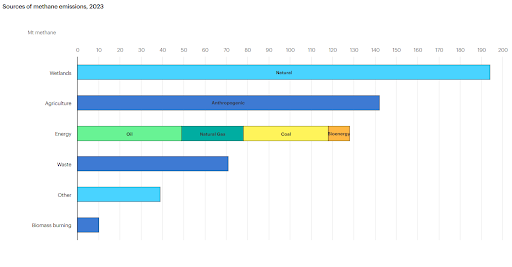
Launch: A voluntary initiative launched at COP26 (Glasgow, 2021) by the European Union and the United States.
Target: To catalyse a collective reduction in global anthropogenic methane emissions by at least 30% by 2030, compared to 2020 levels.
Signatories: As of November 2025, 159 countries have joined the pledge.
Emission Rank: India is now the world's third-largest methane emitter, after China and the USA, responsible for nearly 9% of global emissions
India has not signed the Global Methane Pledge. Reasons for Not Joining:
National Mission on Sustainable Agriculture (NMSA): Promotes climate-resilient practices, including methods to reduce methane from rice cultivation.
Sustainable Rice Cultivation Techniques:
Livestock Management: The National Livestock Mission focuses on improving animal breeds and promoting balanced rationing to reduce enteric fermentation.
Waste to Energy: The GOBAR-Dhan scheme promotes the use of cattle dung and other organic waste to produce biogas, effectively capturing methane for use as a clean energy source.
Source: DOWNTOEARTH
|
PRACTICE QUESTION Q. The 'SATAT' scheme, frequently seen in the news, is aimed at: A) Promoting electric vehicle adoption in urban areas. B) Establishing Compressed Bio-Gas (CBG) plants to manage organic waste. C) Providing subsidies for solar-powered irrigation pumps. D) Developing satellite technology for agricultural monitoring. Answer: B Explanation: The Sustainable Alternative Towards Affordable Transportation (SATAT) initiative focuses on setting up CBG plants to convert waste like agricultural residue and cattle dung into clean fuel, thereby reducing methane emissions and providing economic benefits. |
Methane is called a 'super-pollutant' because of its high global warming potential. Over a 20-year period, it is more than 80 times more potent at trapping heat in the atmosphere than carbon dioxide (CO2). While it has a shorter lifespan (about 12 years), its intense warming effect means that cutting methane emissions can rapidly slow down the rate of global warming.
India abstains from the GMP mainly because significant methane emissions come from its agricultural sector (livestock and paddy), deemed "survival emissions" essential for millions of small farmers. The government argues binding cuts threaten food security and the rural economy. India prefers addressing climate goals under the UNFCCC, adhering to Common But Differentiated Responsibilities.
The Sustainable Alternative Towards Affordable Transportation (SATAT) scheme is an Indian government initiative to promote the production of Compressed Bio-Gas (CBG) from organic waste, such as agricultural residue, cattle dung, and municipal solid waste. By converting this waste into fuel, it prevents the uncontrolled decomposition that releases methane into the atmosphere.
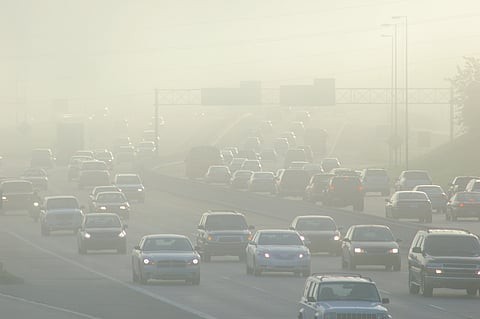


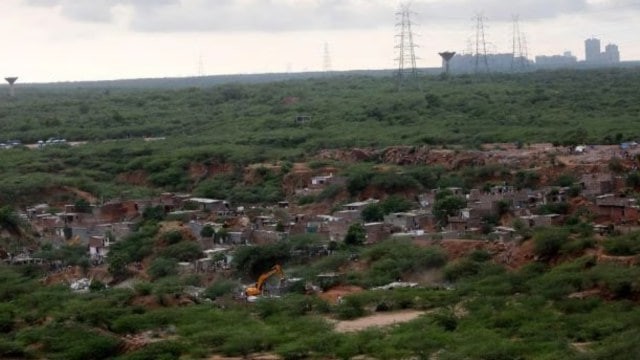
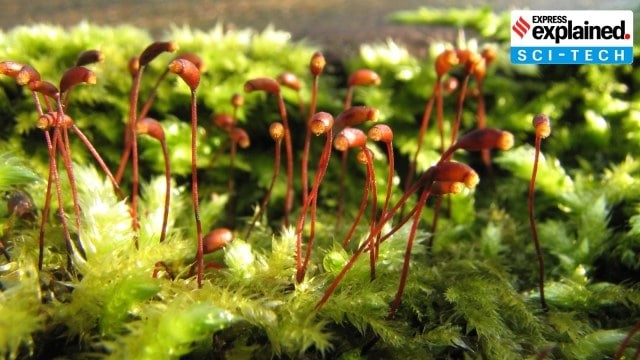


© 2025 iasgyan. All right reserved